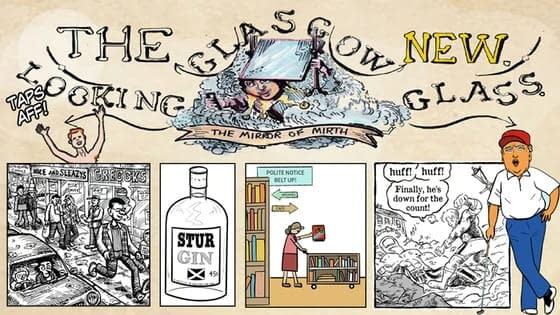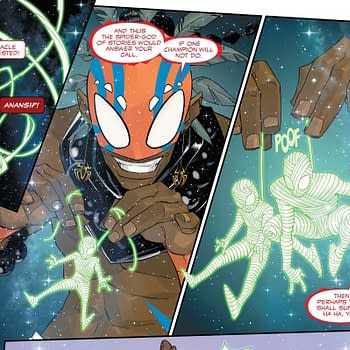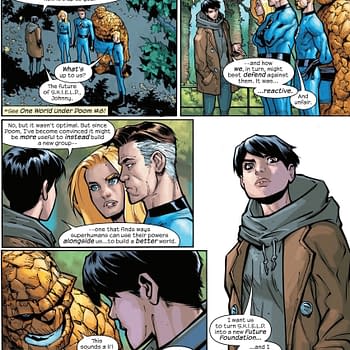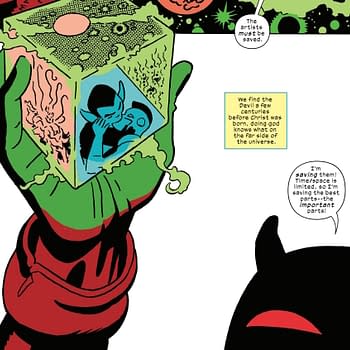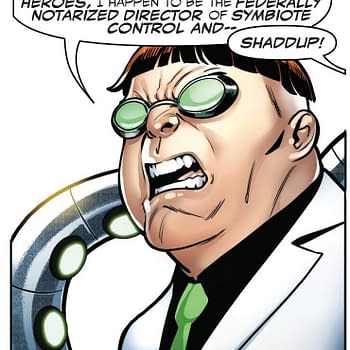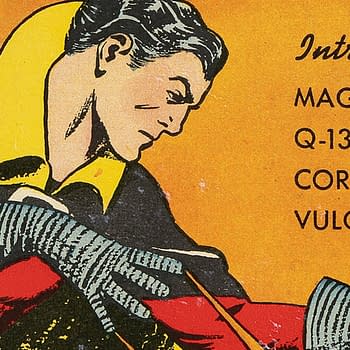Posted in: Comics, Current News | Tagged: Looking Glass, William Hogarth
This Week Is The Two Hundredth Anniversary Of The Comic Book
This week is the two hundredth anniversary of the comic book, The Glasgow Looking Glass
Article Summary
- The Glasgow Looking Glass, published June 11, 1825, marks 200 years since the comic book's inception.
- Key comic traits—word balloons, serial storytelling, and recurring characters—emerged in this Scottish comic.
- Debate continues over the true "first comic," with earlier British and Swiss contenders in the running.
- The Glasgow Looking Glass is being relaunched, celebrating its legacy and influence on comics worldwide.
It may be Marvel 616 Day in America right now for the 16th of June. But maybe last week Britain should have celebrated 611 Day? Or 116 Day, to have it the right way round. As comic book historian, podcaster and expert Alex Fitch asks if the 11th of June, 2025, was the 200th anniversary of British Comics? And by that, we mean all comics?
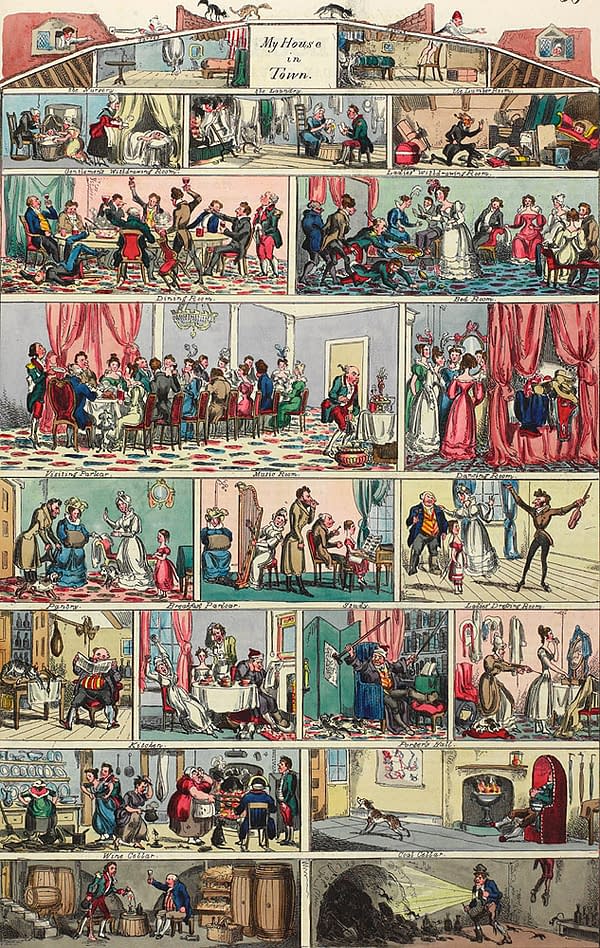
Because, in summary, the 11th of June, 1825 was the publication date of the first issue of The Glasgow Looking Glass, something a number of Scottish researchers (obviously) point to as the publication of the first comic book. Alex Fitch states,
"This satirical magazine certainly contains a number of storytelling innovations in the same place for the first time, which together might be considered to define what we expect of a comic. These include: the use of "to be continued…" at the end of stories, as serialised comics were an innovation at this point, as well as the novel use of word balloons, where the words spoken by a character are shown to emanate from their mouth, often surrounded by the drawing of a bubble with a tail pointed at the speaker. Word balloons were not a new idea, though, as 18th-century artist and satirist William Hogarth was one of the first people to use word balloons in 1750s humour prints, and medieval religious art had previously pioneered their use. The Glasgow Looking Glass is also notable for containing serialised illustrated narratives (something that later Victorian magazines were known for, via stories by Arthur Conan Doyle and Charles Dickens), and it had recurring characters in cartoons and strips. So with earlier uses of its 'ingredients' in mind, what makes The Glasgow Looking Glass the first comic? One can see the periodical as a tipping point for the medium as it contained more comic strips than text, but we need to question whether this is a good enough definition to single out the title as the first uniquely identifiable example of the medium."
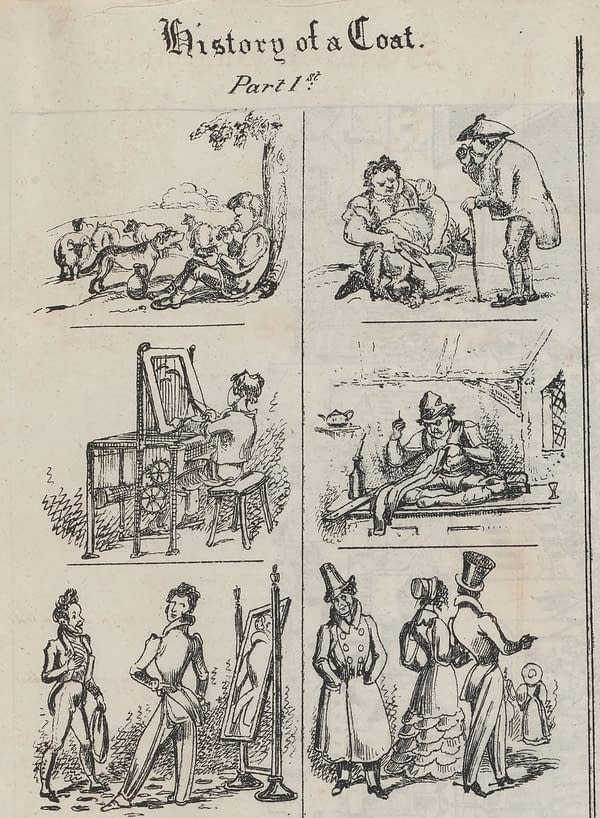
Fitch cites the late comics historian Dennis Gifford writing about predecessors to the Looking Glass as being "prototype comics" including The Comick Magazine (1st of April 1796) and The Poetical Magazine (1st of May, 1809) and that The Comick Magazine, featuring William Hogarth's series of sequential humour prints, "started the long confusion between something being "comic" (funny*) and "a comic" (a periodical made up of picture strips), which persists to the present day."
Alex Fitch adds "It's worth noting that a book collecting Hogarth's serialised humour prints was also released in 1768, so perhaps that might earn the definition of the first British comic, beating The Glasgow Looking Glass by 57 years, even if it only had a limited print run and was purchased by upper-class collectors of humorous prints." And that "The Poetical Magazine also featured a recurring character, Dr Syntax, in a serialised story written by William Combe and illustrated by Thomas Rowlandson. Both of these early titles were mainly text-based, like later satirical magazines such as Punch, but they normalised the idea of comic drawings in periodicals."
He also pulls in the earliest American claim to the form."Some point to an 1840s reprint of Swiss Cartoonist Rodolphe Töpffer's 'graphic album' Histoire de Mr. Vieux Bois, called in English The Adventures of Mr. Obadiah Oldbuck. Conversely, a very popular story told about 'the first American Comic', is the publication of Famous Funnies (dated to either 1933 or 1934, depending on whether you count the test printing, or first monthly instalment), which reprinted newspaper comic strips before engaging with new material. This is a story repeated by fans of DC and Marvel Comics who want to date the origin of the medium to the 1930s. However, collections of newspaper comics date back to two decades earlier, with collections of strips such as Mutt and Jeff."
As for The Glasgow Looking Glass, two hundred years and a handful of data ago, there is a current plan to relaunch the comic for the present day, with a little more Electric Soup or Viz to it…
You can read Alex Fitch's full essay on the 200th anniversary of Glasgow Looking Glass – and comic books – right here.


